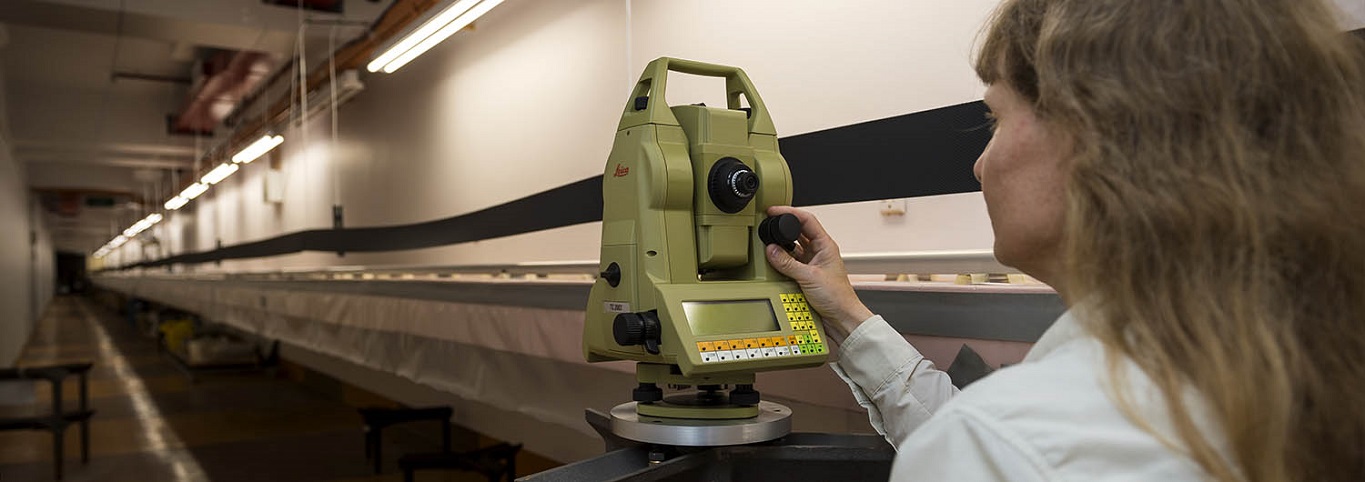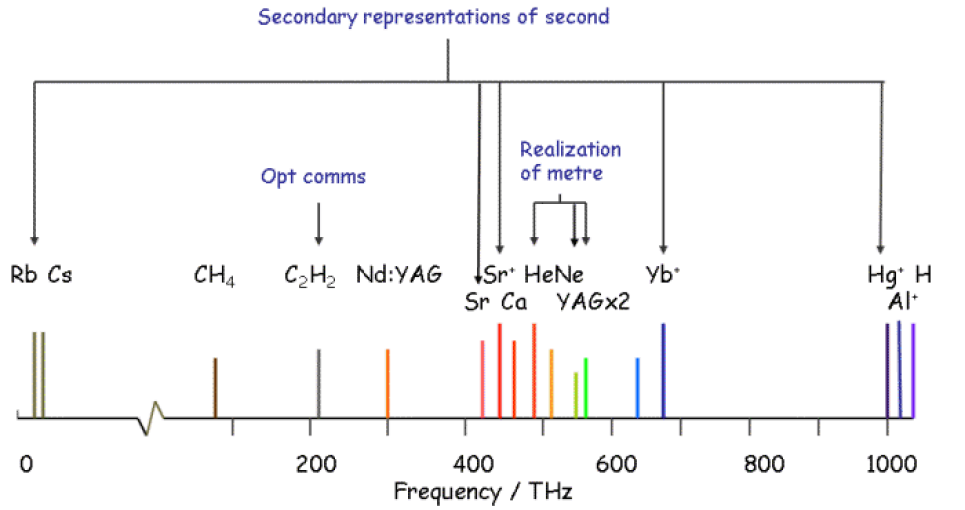Metre

The Unit – metre, m (mita)
The SI unit of length, the metre (m), takes its name from Greek and French nouns for “measure”.
The metre, along with the kilogram, was one of the first units of the metric system. It was originally defined (in 1793, at the time of the French Revolution) as one ten millionth of the distance on the earth of the meridian line that runs from the north pole, through Paris, to the equator. For practical use, a series of platinum-iridium metre bars were cast.
The current definition of the metre dates from 1983, and it fixes the metre in terms of the second and the speed of light. In practice, the metre is realised by measuring the frequency or vacuum wavelength of specific types of lasers.
“The metre is the length of the path travelled by light in a vacuum during a time interval of 1/299 792 458 of a second.”
It follows that the speed of light in vacuum (c0) is exactly 299 792 458 metres per second (m/s).
The 1983 definition defines the metre in terms of a fundamental constant, the speed of light in a vacuum. After the redefinition of the SI, expected to take effect on 20 May 2019, this link will be more explicit. All seven units will be defined by giving exact numerical values to physical constants.
The metre definition implies that length can be measured by measuring the time a light beam takes to traverse a distance. This can be practically realised in two ways:
- Time of flight, where a pulse of light is sent over the length that is to be measured.
- Interferometry, where a length can be measured in terms of the vacuum wavelength (λ) of a light source of known frequency (f), via the relation.
λ =c0/f
The frequency of a light source (radiation) used in interferometry needs to be determined in terms of the second or the frequency of radiation of the caesium atom. This involves comparing the frequency of the radiation used for length interferometry (usually visible to near infrared 430 nm to 900 nm, 330 THz to 700 THz) with a caesium clock with a frequency of 9.1 GHz. Before the invention of optical frequency combs, this was technically very challenging, but is now achievable in one step.
To further disseminate the realisation of the metre, the International Committee for Weights and Measures (CIPM) Technical Committees for Length and Time and Frequency maintain a combined list of “Recommended values of standard frequencies for applications including the practical realization of the metre and secondary representations of the second”(external link). This list includes lasers and other sources, and the frequency they will generate if operated in accordance with the specified parameters.
The recommended visible sources include highly-accurate lasers, such as Helium-Neon lasers locked to a hyperfine component of the absorption spectrum of iodine. When operated correctly, the frequency of these lasers can be two parts in 10-11. The list also includes lower-accuracy light sources, such as an unstabilised Helium-Neon laser at 633 nm. Despite their lower accuracy (1.5 x 10-6), unstabilised lasers can be useful in some measurements. Because any radiation in the recommended values is a primary realisation of the metre, such a laser does not require calibration when the associated uncertainty is fit for purpose.

Technical Capability
At MSL, we operate a commercial iodine-stabilised helium-neon laser at 633 nm to realise the metre. We use this to calibrate the frequency of the interferometers that we then use for length measurement of artefacts (e.g., gauge blocks, rulers and tapes), or to calibrate instruments such as electronic surveying equipment.
This allows MSL to provide traceable measurements across a range of dimensional capabilities, from gauge blocks, length bars, end standards, and ring and plug gauges, through to surveying equipment (electronic distance meters (EDMs) and bar-coded surveying staffs).
We also have the expertise to carry out a wide range of non-routine dimensional measurements, e.g., determining roundness of curved surfaces via coordinate measuring machines (CMMs), or the flatness of measuring faces via optical parallels.
Our Research
Our research covers a wide range of topics, but we’re currently exploring three main areas:
- Error mapping and uncertainty in coordinate measuring machines (CMMs).
- Atomic force microscopy (AFM) for measurement of surface features and nanoparticles.
- Uncertainty contributions to long distance measurements made with electronic distance meters (EDMs).
Watch a short video abaout the metre here(external link).
